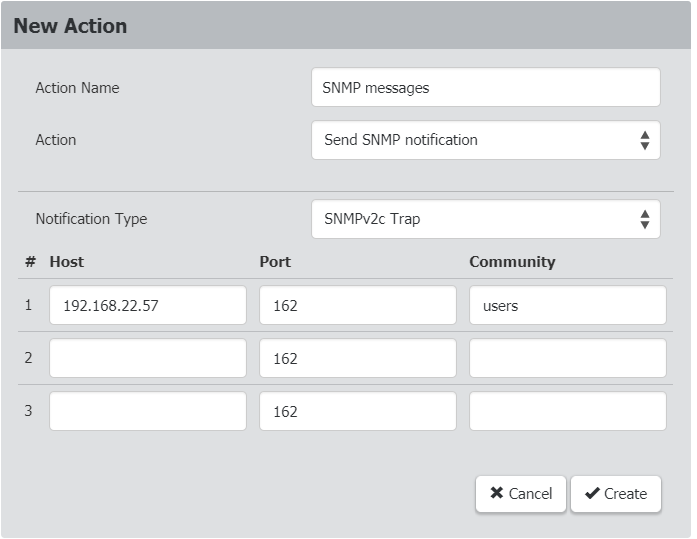Use this action to send an SNMP notification to one or more SNMP servers.
See Event Management for help assigning this action to an event.

Tip: An SNMP v2c notification action permits a maximum of three SNMP destinations. If you need to assign more than 3 SNMP destinations to an event, you can create and assign multiple actions comprising all the destinations.
Note: Duplicated SNMP Trap v3 secName (User ID) is not supported when multiple SNMP Trap destinations are configured.

Security level |
Description |
|---|---|
"noAuthNoPriv" |
Select this if no authorization or privacy protocols are needed. |
"authNoPriv" |
Select this if authorization is required but no privacy protocols are required. Select the authentication protocol - MD5 or SHA Enter the authentication passphrase and then confirm the authentication passphrase |
"authPriv" |
Select this if authentication and privacy protocols are required. Select the authentication protocol - MD5 or SHA Enter the authentication passphrase and confirm the authentication passphrase Select the Privacy Protocol - DES or AES Enter the privacy passphrase and then confirm the privacy passphrase |